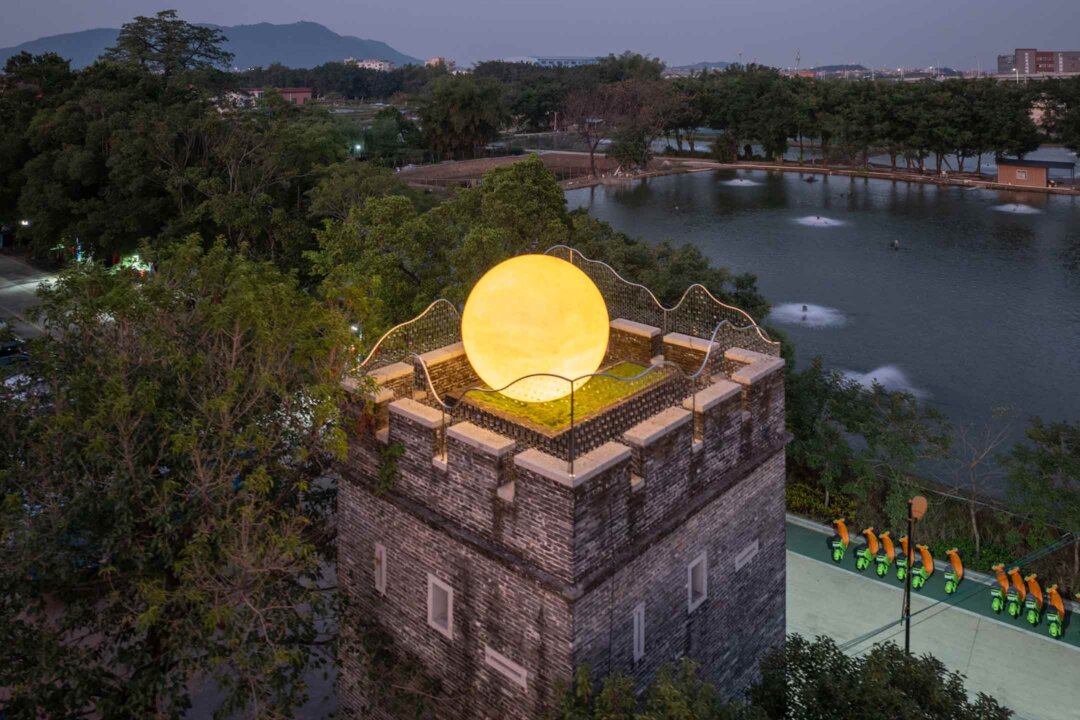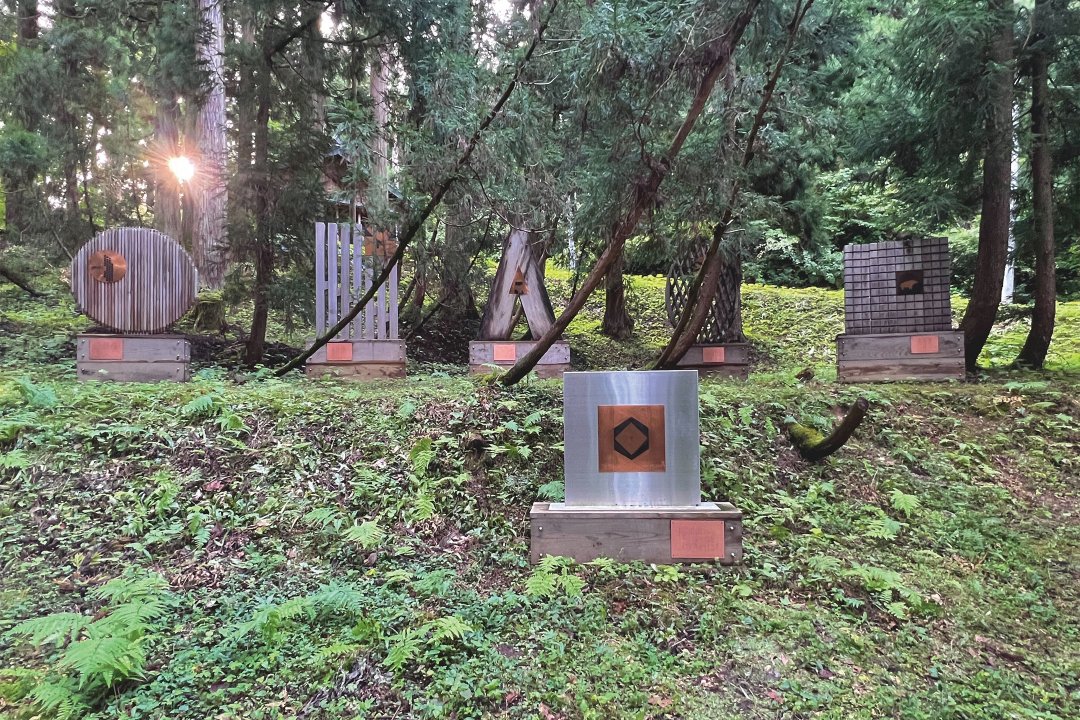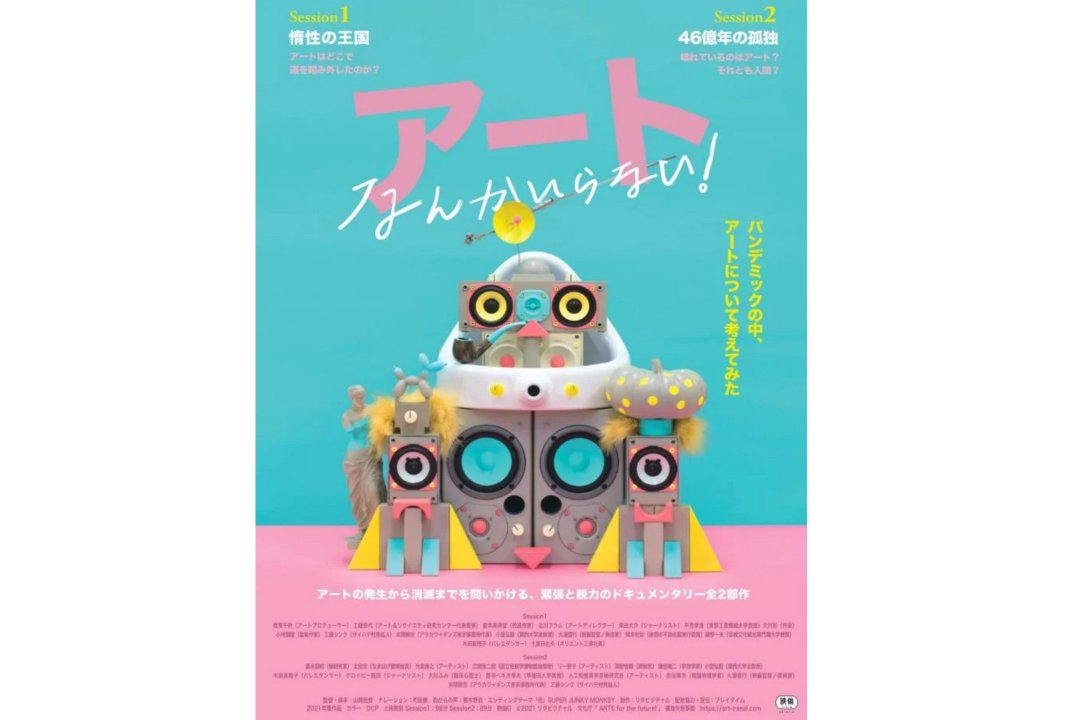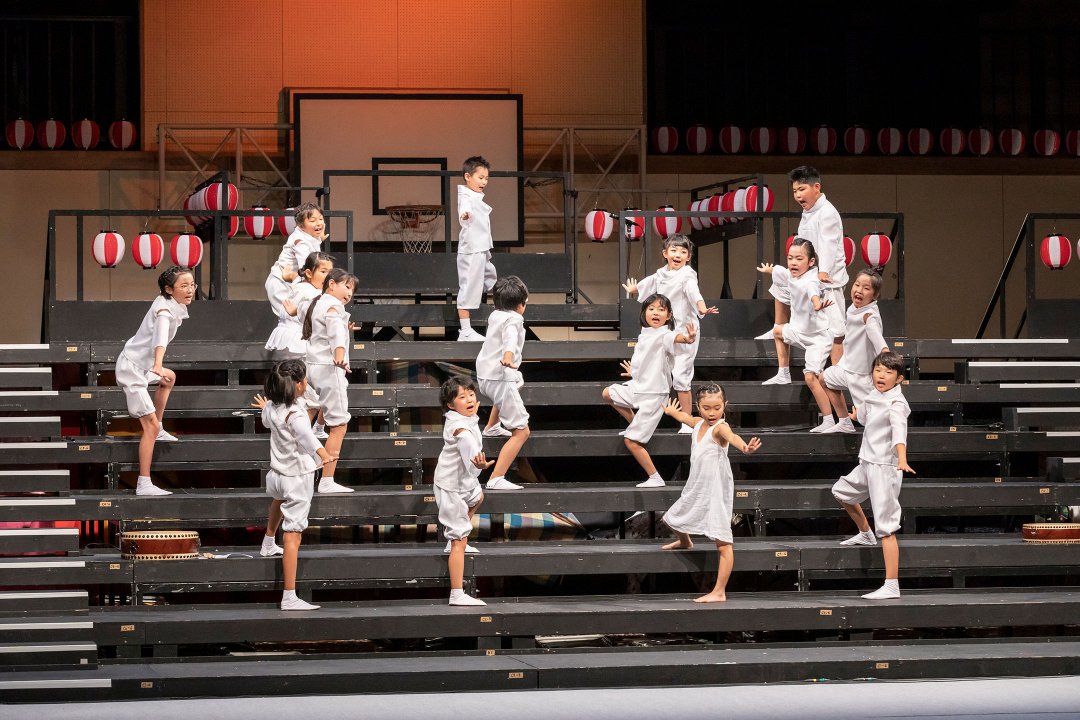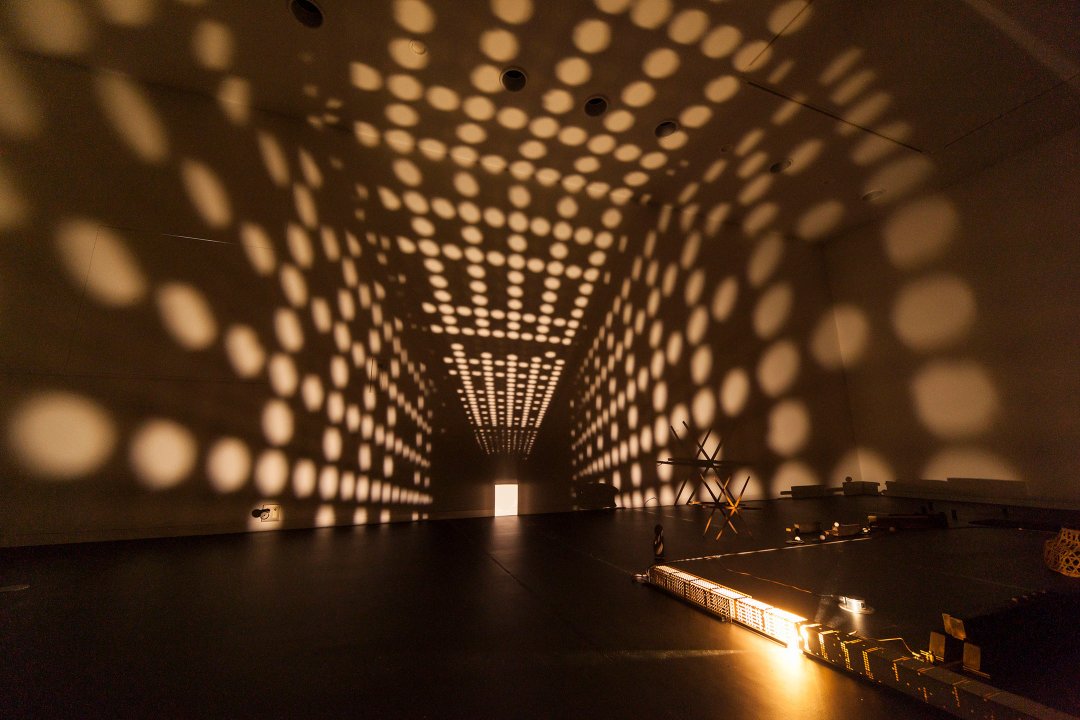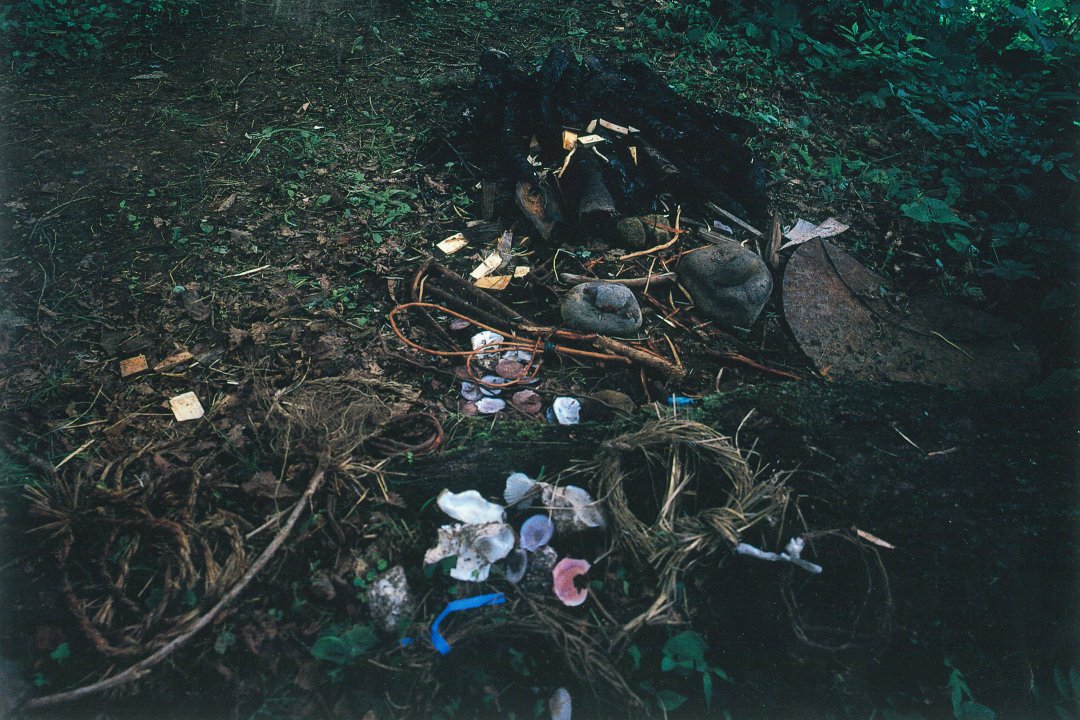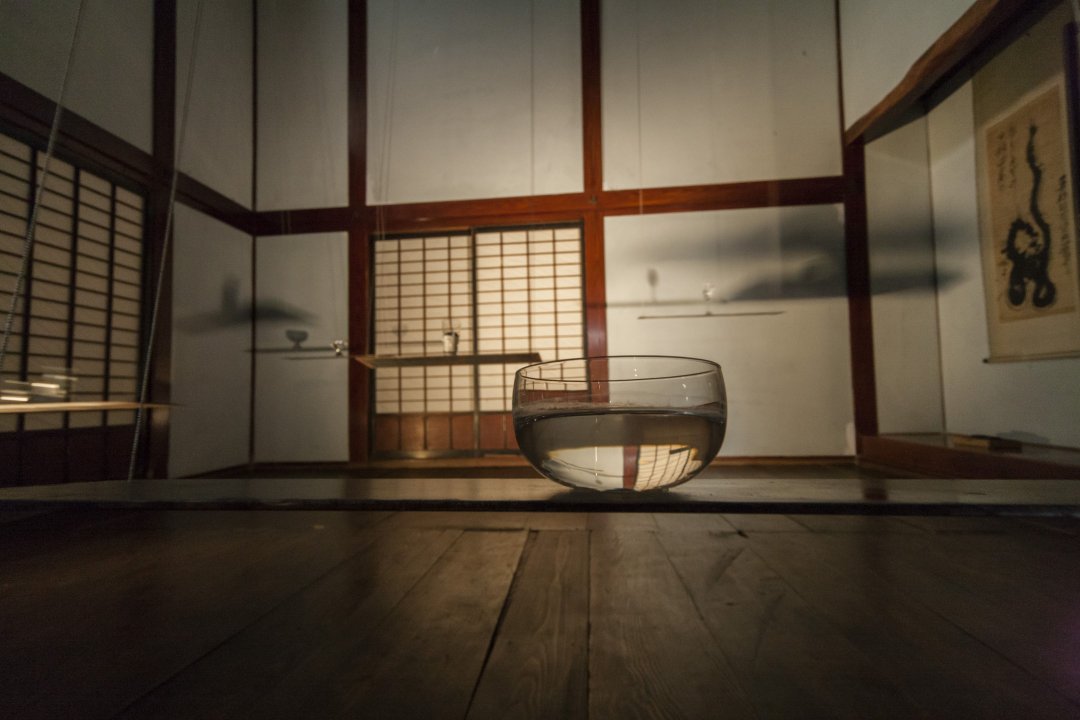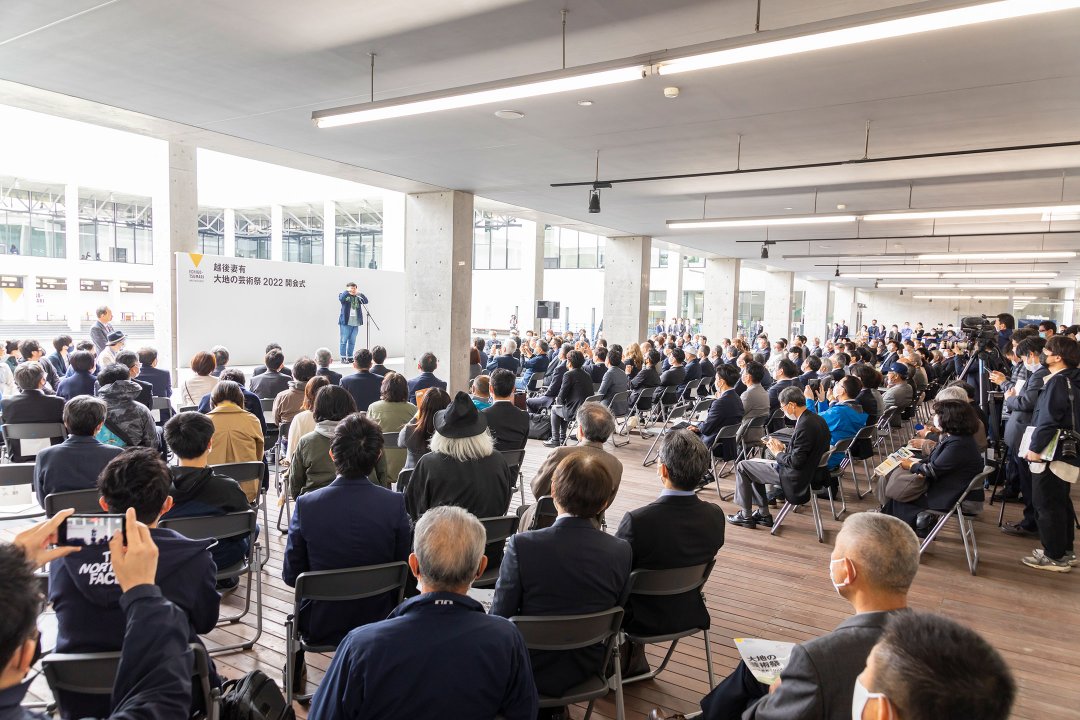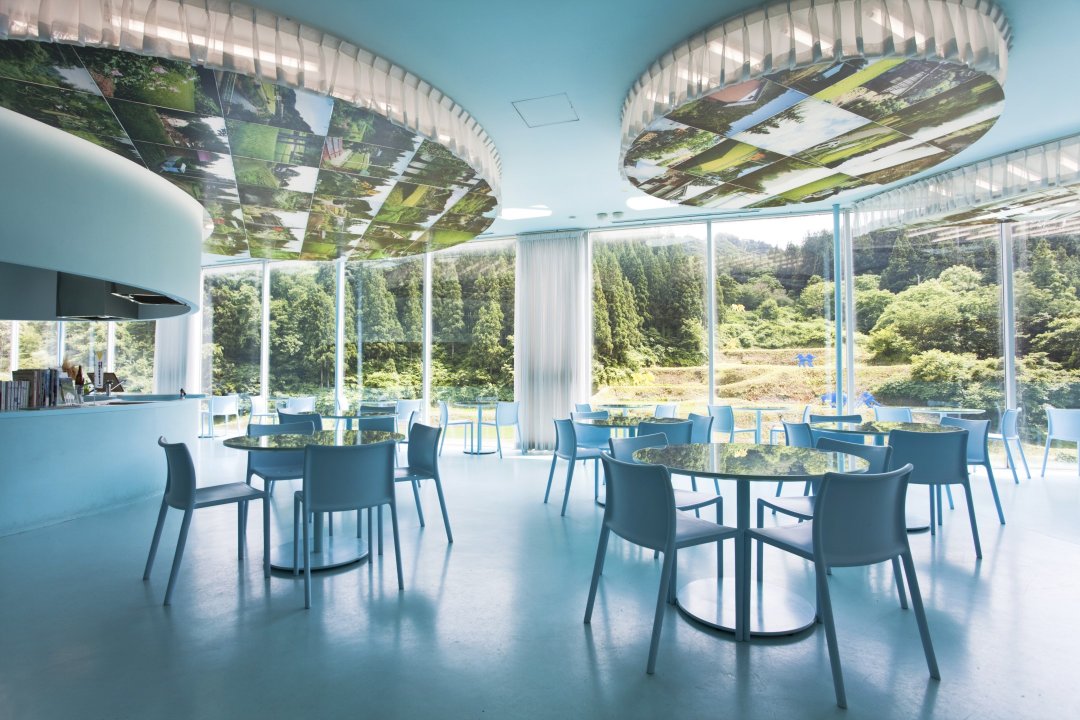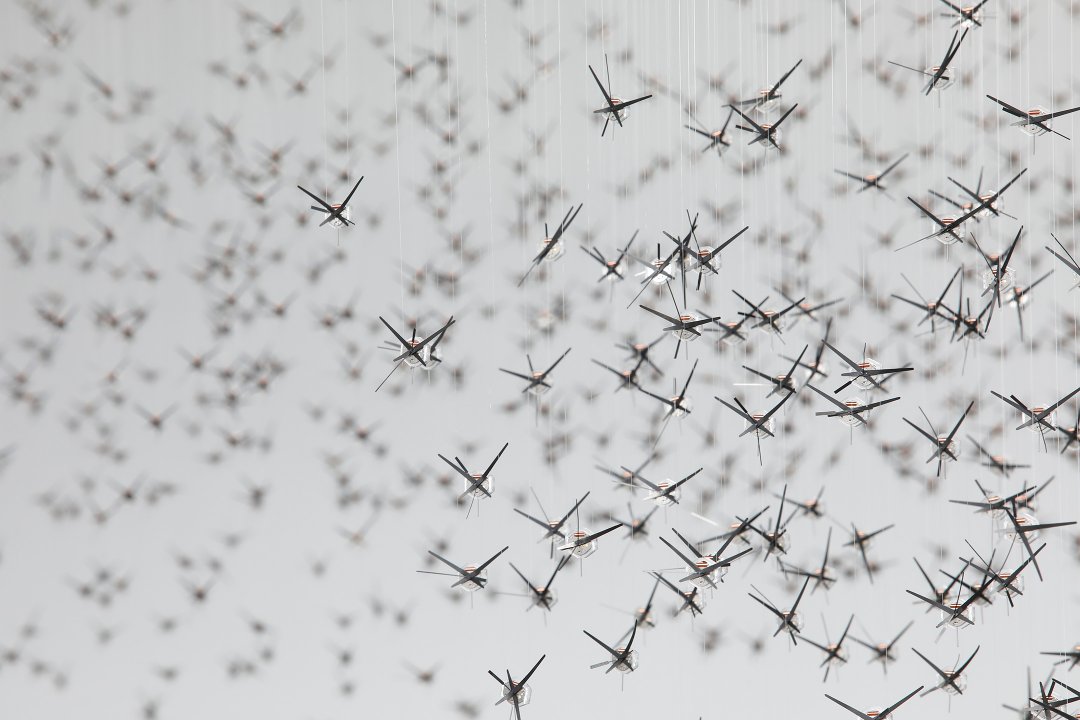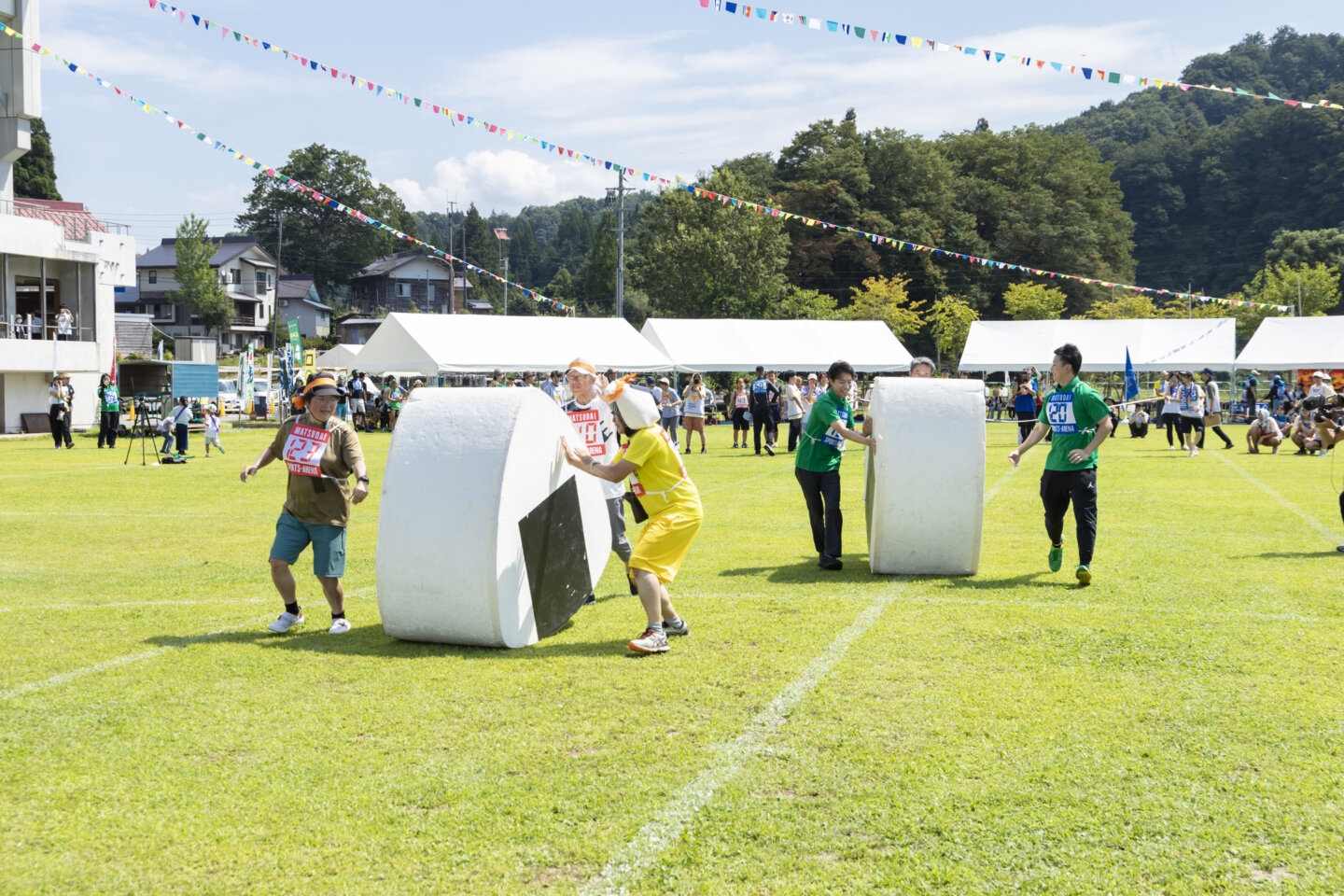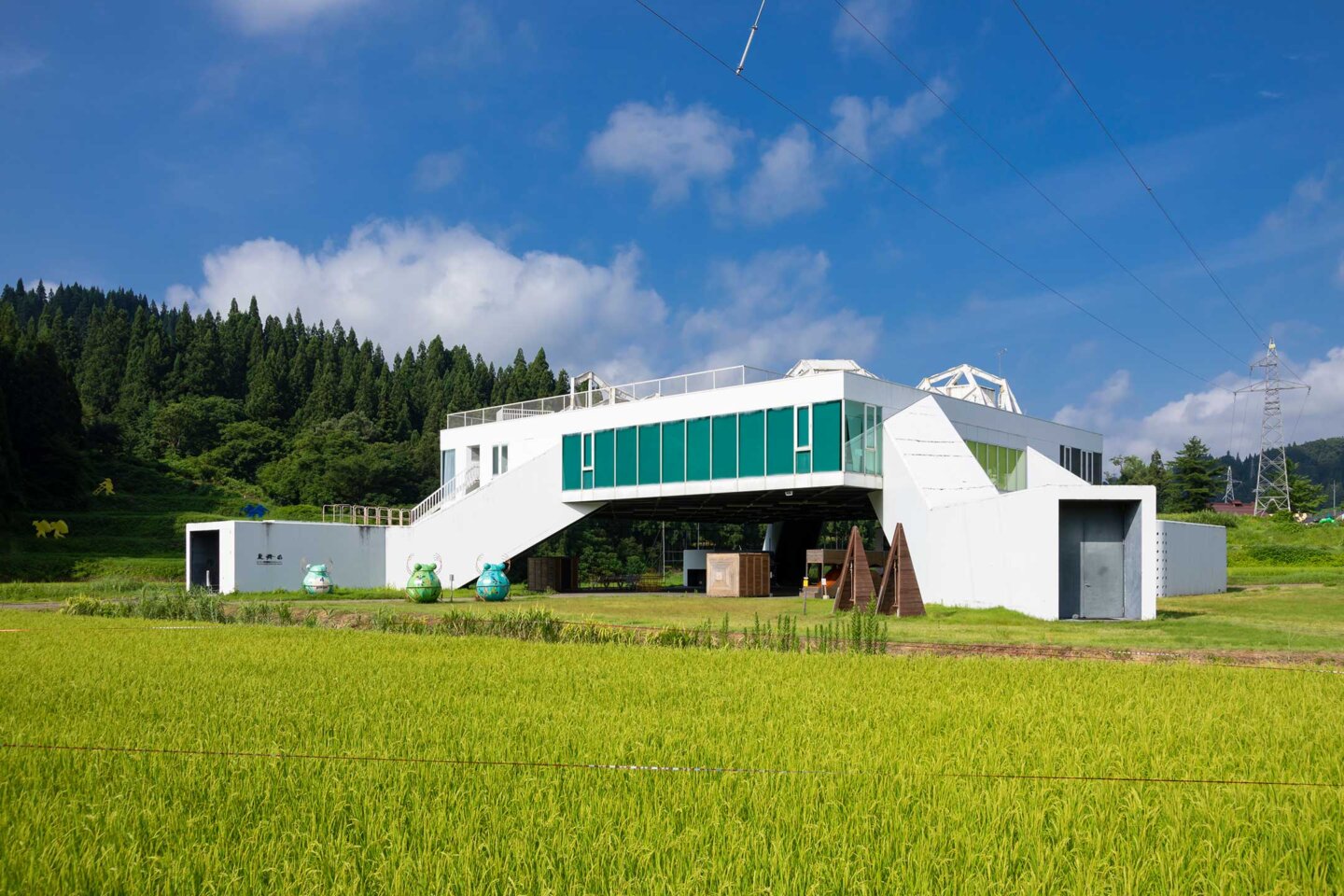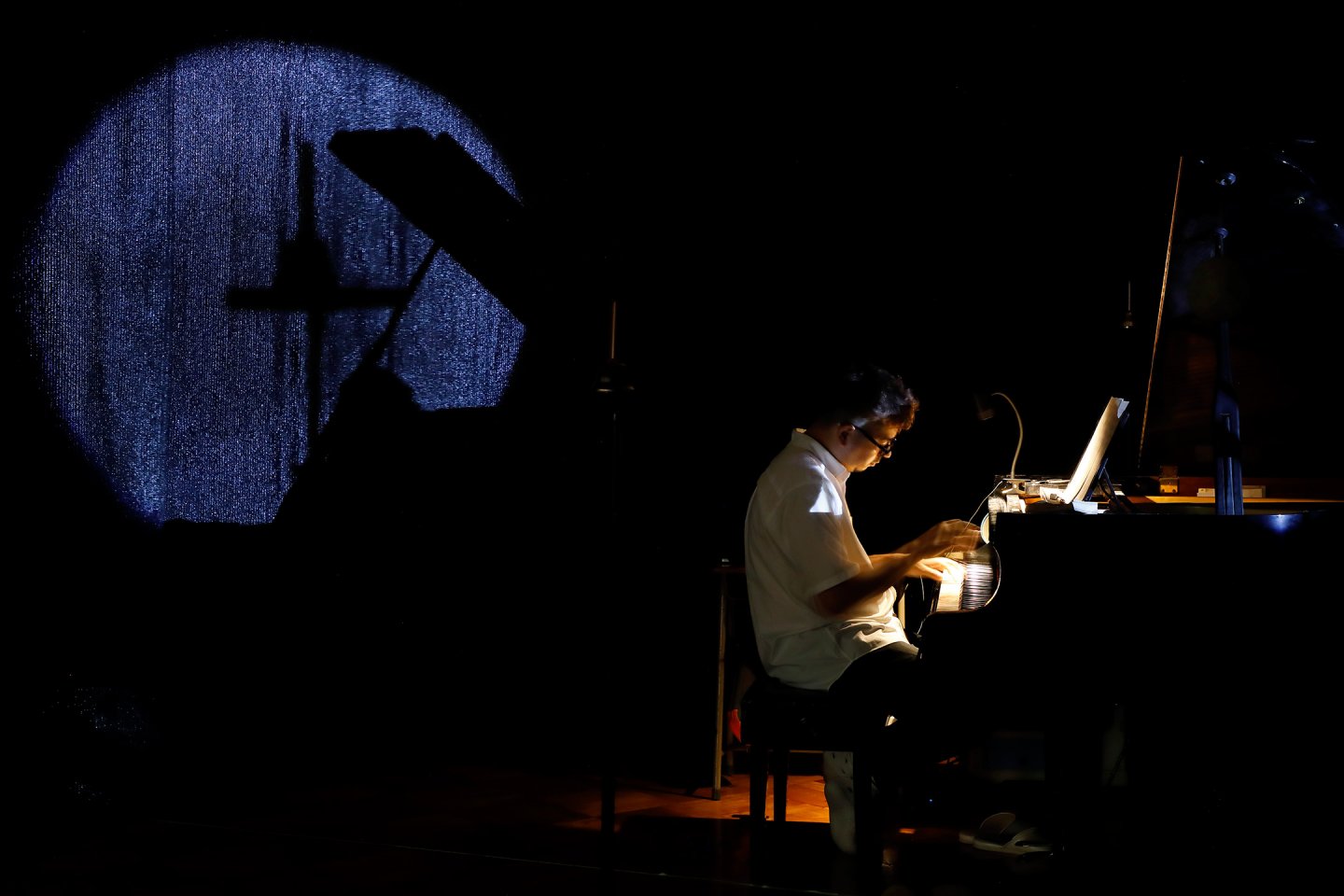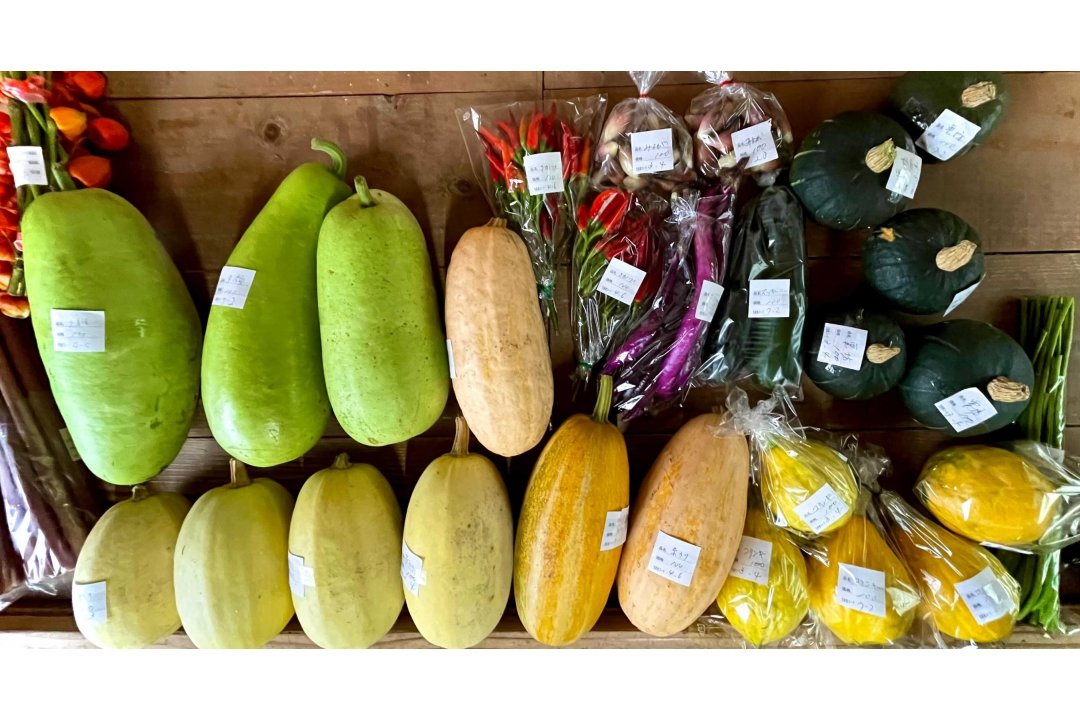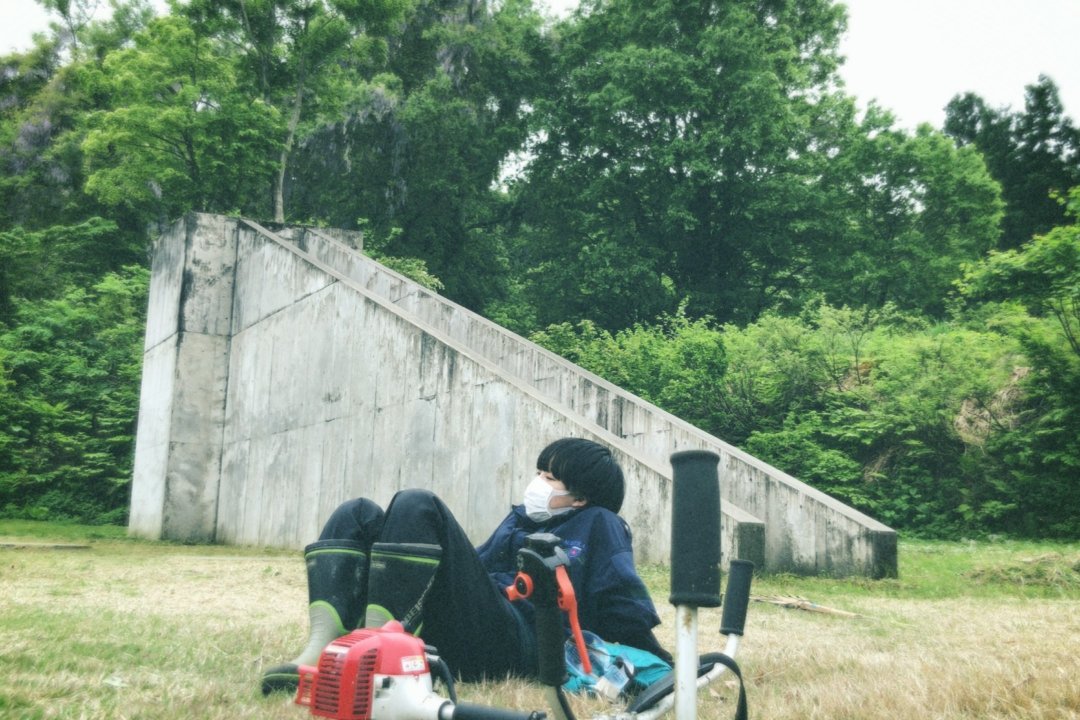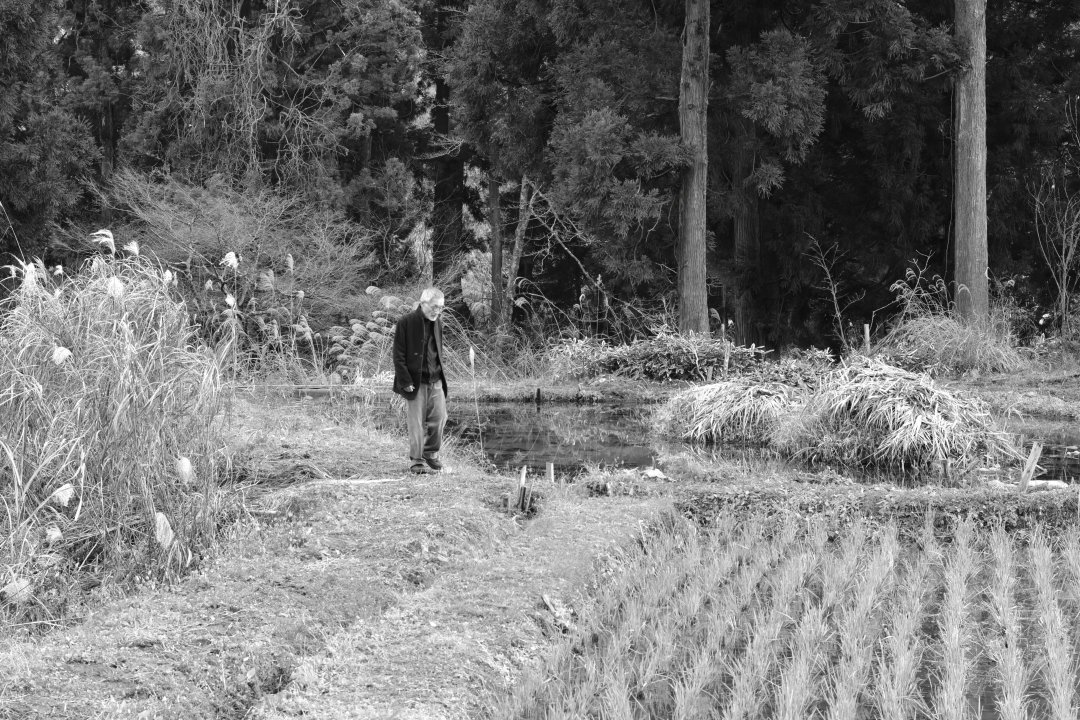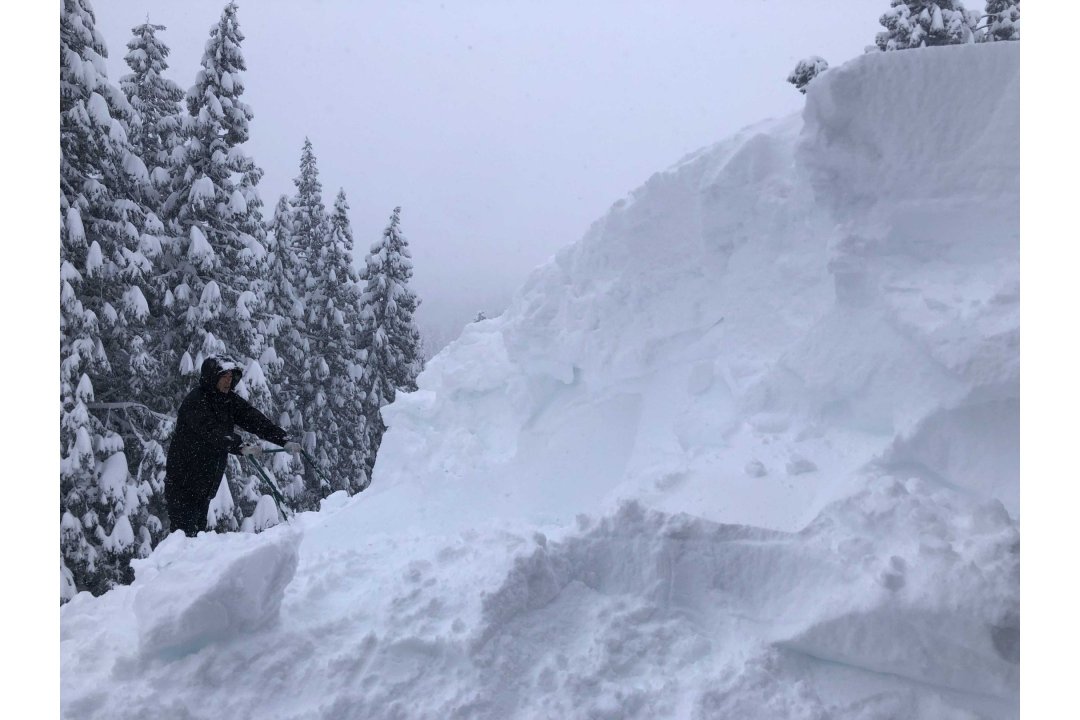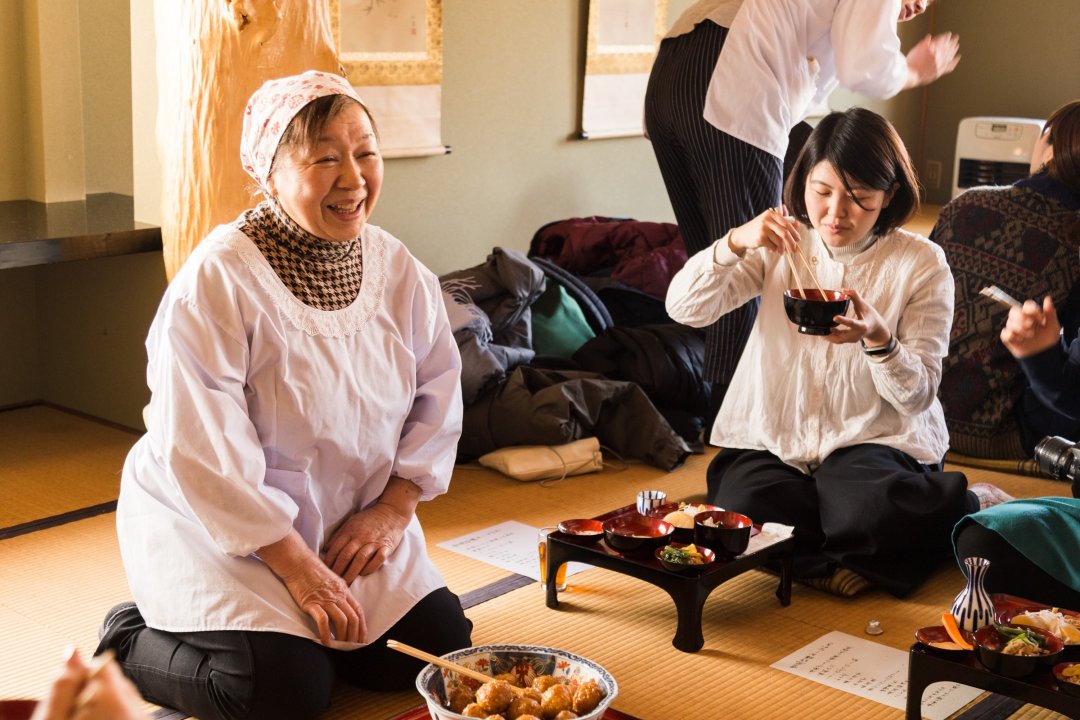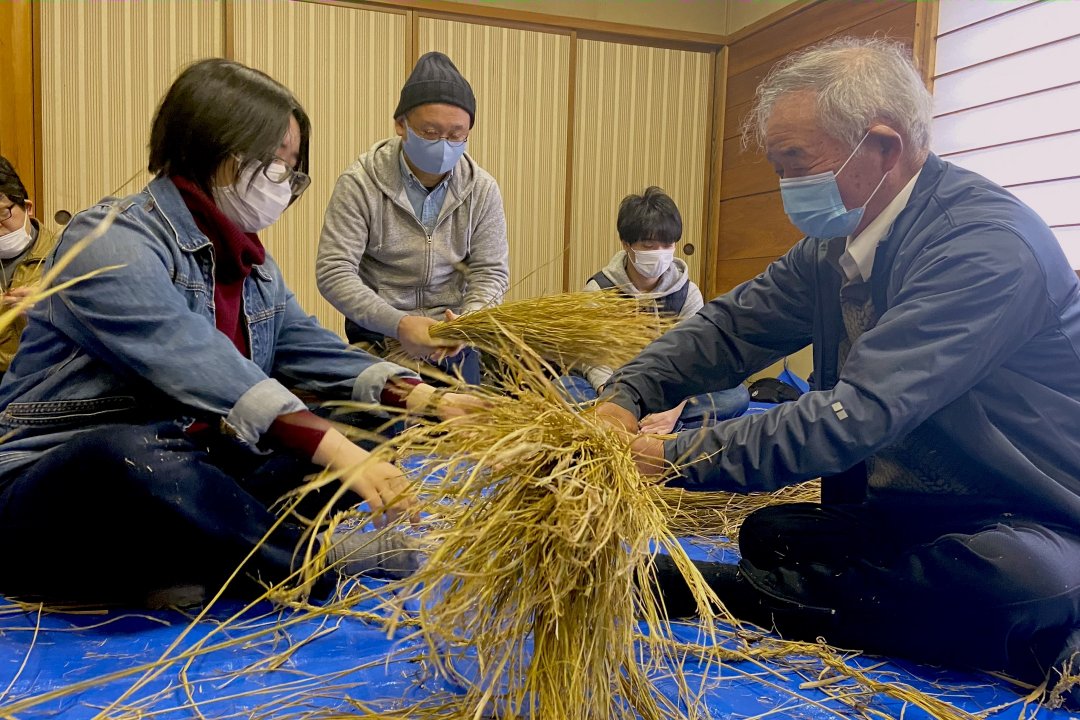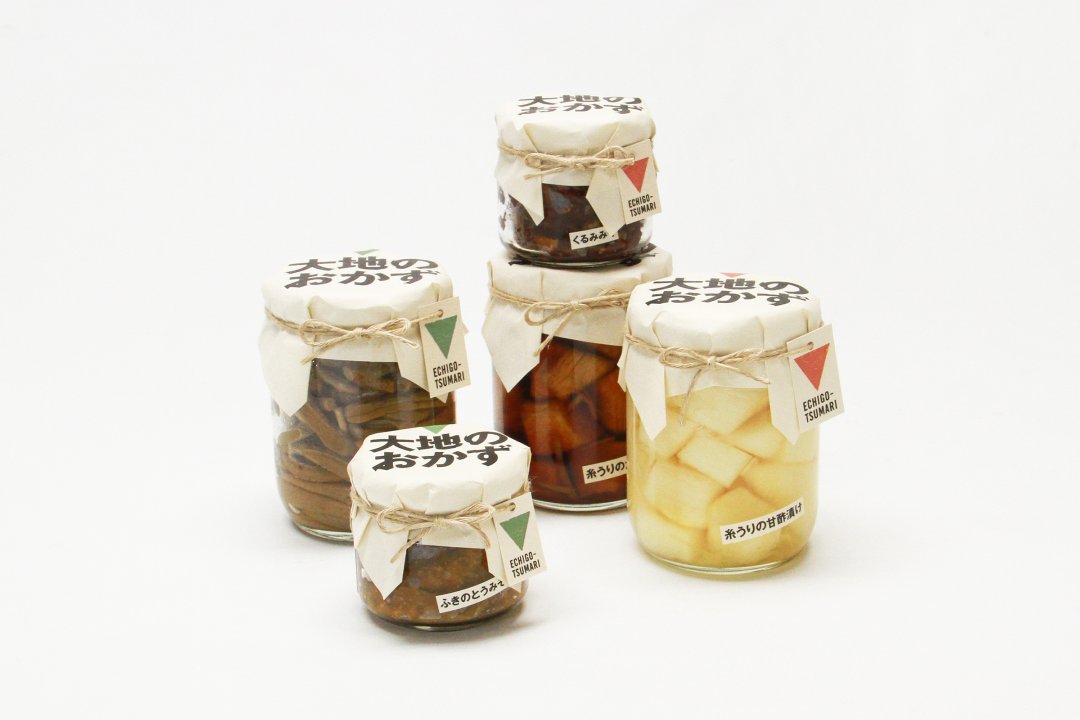Thinking 21st century art in the world from Niigata
Echigo-Tsumari Art Field - Official Web Magazine
Feature / Visiting Echigo-Tsumari with her, Vol.2-1
Chiaki Mayumura challenge an artistic field trip with open mind
Chiaki Mayumura (Singer song writer idol)
Chiaki Mayumura is regarded as a revolutionary figure amongst idols for her unforgettable songwriting, talented singing and unique live performances such as “bus-jack live” and “drag-net live”. She embarked on her samurai worrier’s quest of art to Echigo-Tsumari. Find out what she discovered with her naïve and positive sense as she dove into the world of art?
Text & edit by Uchida Shinichi / Photo by TOYOSHIMA Nozomu / Edit by KAWAURA Kei(CINRA.NET editorial team) / Translated by Miwa Worrall
25 November 2019
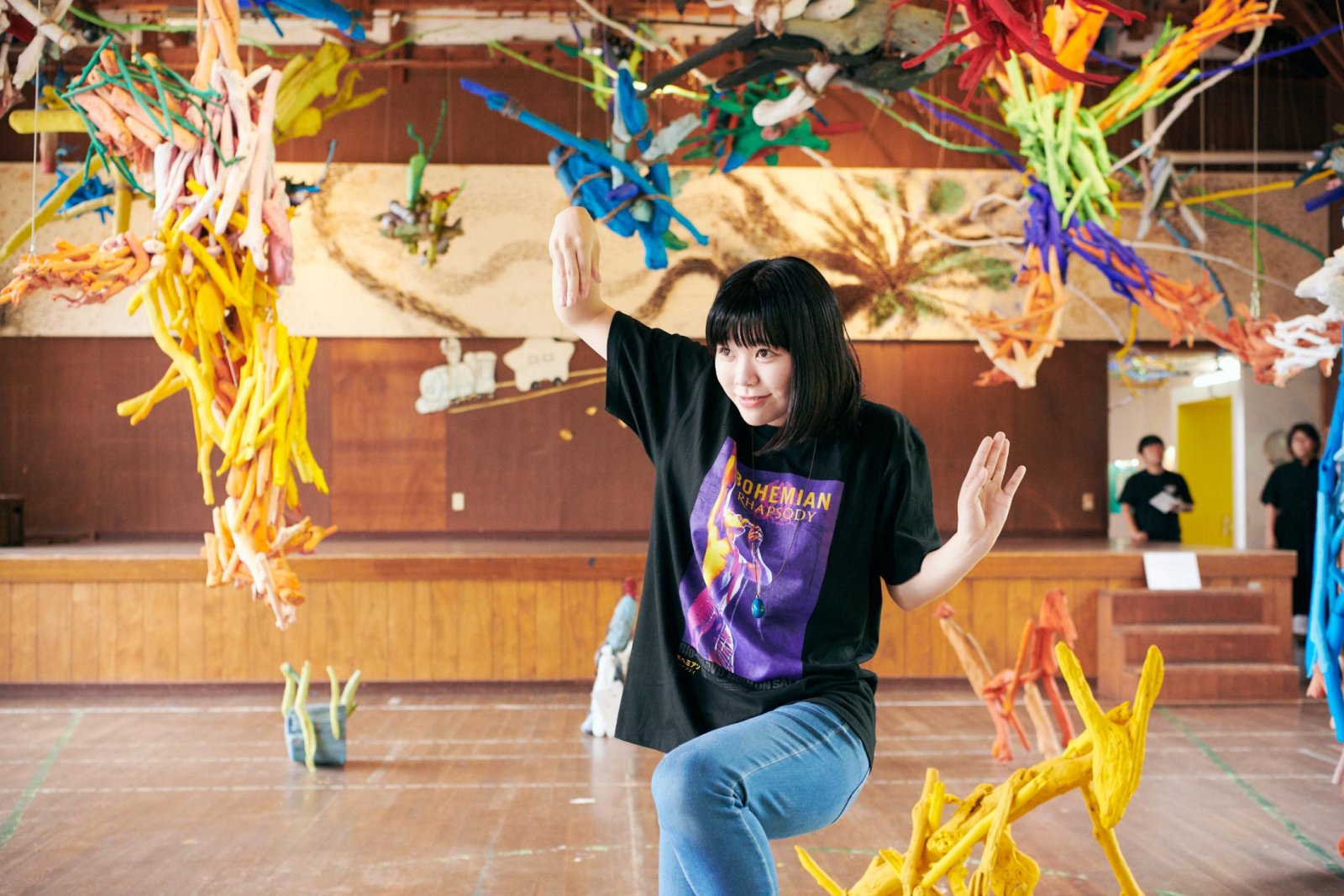
Explore a former elementary school - “Museum of Picture Book Art”
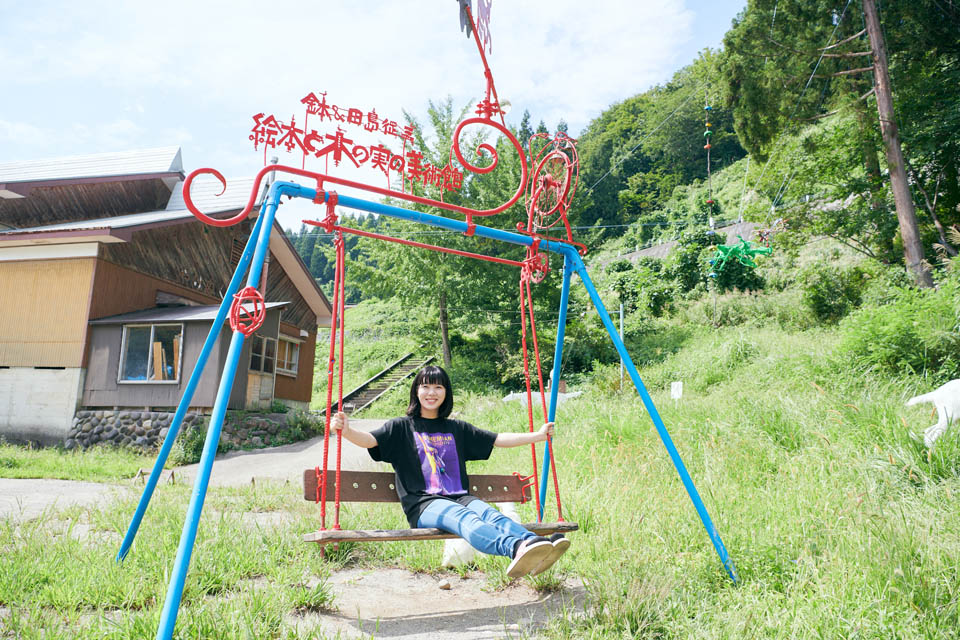
Chiaki Mayumura. Hachi & Seizo Tashima Museum of Picture Book Art was launched in 2009.
The first stop was “Hachi & Seizo Tashima Museum of Picture Book Art” – the place where a former elementary school closed in 2005 has been transformed into “walk-in pallete”. Visitors experience the story of “gakko ha karappo ni naranai (The school never becomes empty)” featuring the last three students and humorous ghosts as they walk through the school building.
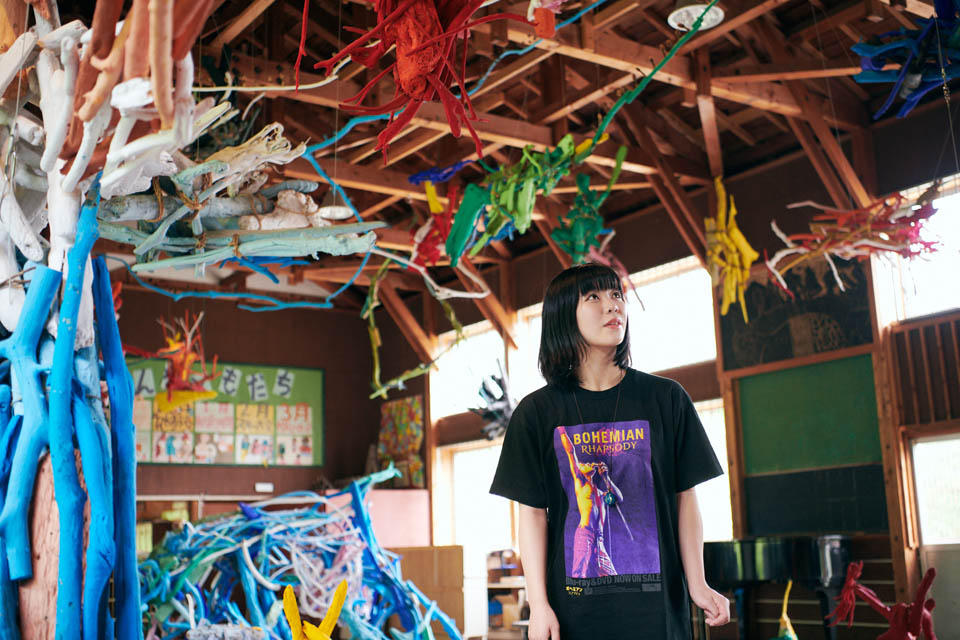
Colourful driftwood objects occupying the former gymnasium space.
At the entrance to the former gymnasium space, colourful driftwood objects welcome visitors. “Wow amazing. Are these animals that were once living at the school”? While being surprised for a moment, Mayumura dove into the world of works.
Look, a blue spotted garden eel! Is this yellow one a turtle? That floating one is “hanging goat”. If all of these hanging from the ceiling are dangling how are they would look like? Hang on – I can twist around by myself.
Mayumura suddenly started to rotate the upper body. “Wow – this is amazing!” Mayumura proved that she has an original way to appreciate art that is unconventional and original.
Hachi & Seizo Tashima Museum of Picture Book Art (2009)
A museum to experience “walk-in pallete” in the former Sanada Elementary School. Seizo Tashima, picture book artist created students, teacher and even ghosts using driftwoods and installed them throughout the space of the former school building with support from local villagers of the Hachi village and volunteers. The museum also present 3D works using driftwoods and nuts. Visit the official website of the museum for details.
Website: Hachu & Seizo Tashima Museum of Picture Book Art
*Please visit the official website to check opening period and time and access to the museum when planning your visit.
The moment when “the rolling and watching art” a new way to see art was born.
“It may be interesting to see them upside down” – Mayumura doesn’t hesitate to try her idea.
Talking passionately about a spot garden eel.
By the way, spot garden eels poke out their long and thin body. They are often with other eels but in fact they are all connected in the sand. This object represents such feature of the garden eels – I would think.
“The walk-in pallete” moves onto one of the next classroom. As we walked up the staircase, we heard an exclamation of surprise. What we saw was “toperatoto”, a ghost hard to dislike which had been living in this school for long time, filling stomach with its favourite treats such as laughter, chatter, and memories. Toperatoto looked happy to our eyes.
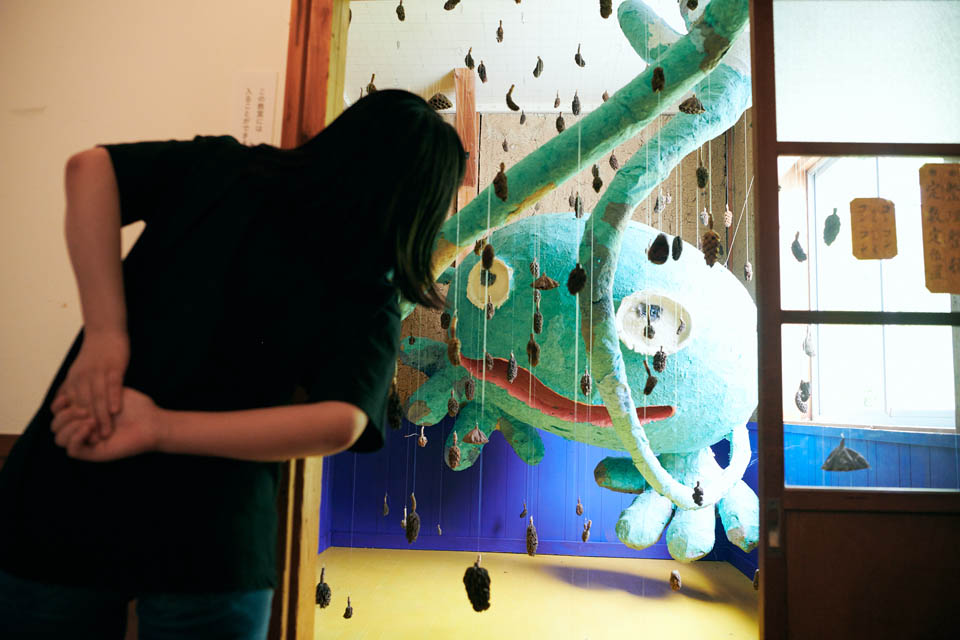
The lovable “Toperatoto” has been fed on memories of students.
Three objects made of driftwood resembling students were studying in a classroom. They were the last three students before the school was closed. We asked what had occured to Mayumura’s mind.
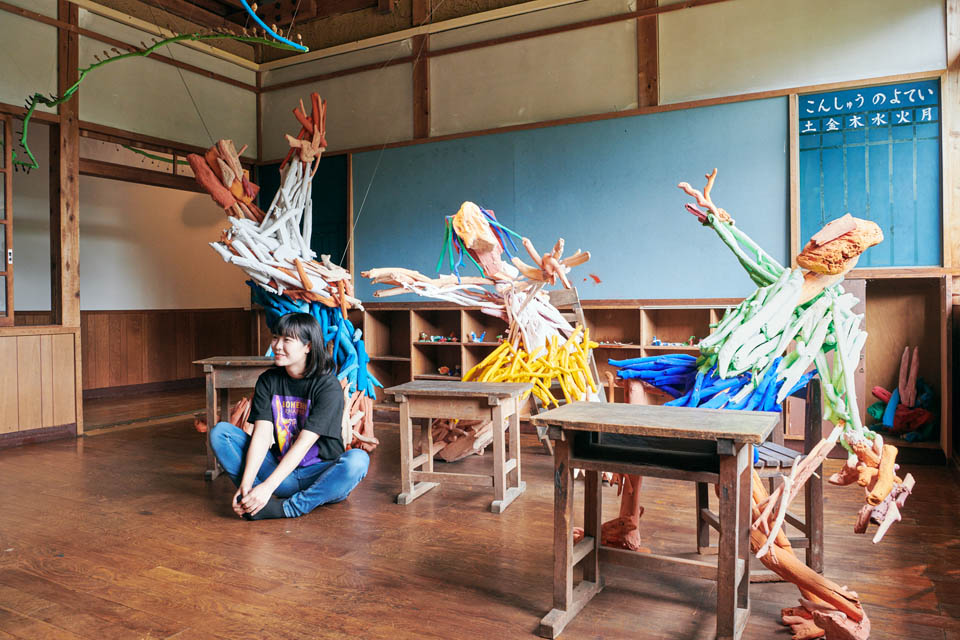
The classroom was once lively.
While there are only three students, it feels so lively. The biggest child on the left must have been popular surrounded by many friends all the time while he didn’t have the closest friend. That is why he knew the real solitude and gentleness – he must have been a rather matured elementary school student.
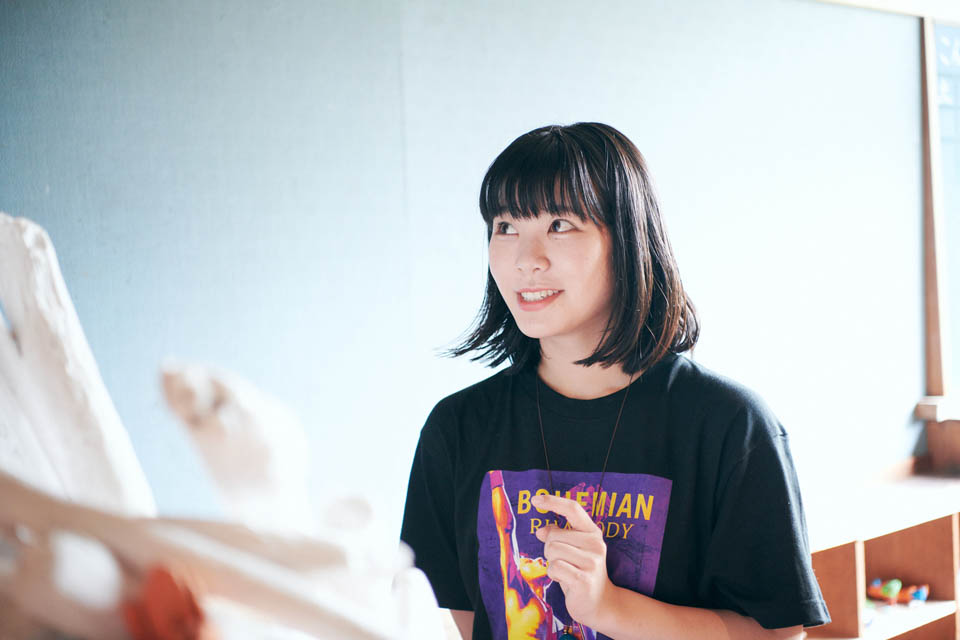
Freely flying her imagination about feeling of students.
According to the picture book, their names are Yuuki, Yuka and Kenta. They returned to the school a day after it was closed and met various ghosts lived in the school. Some ghosts were friendly like Toperatoto whereas the others were more troublesome like Doradoraban who enjoyed crushing people’s dreams and hopes. Three students tried hard to stop Dradoraban. But how – Mayumura wonders. She found the answer in the next room.
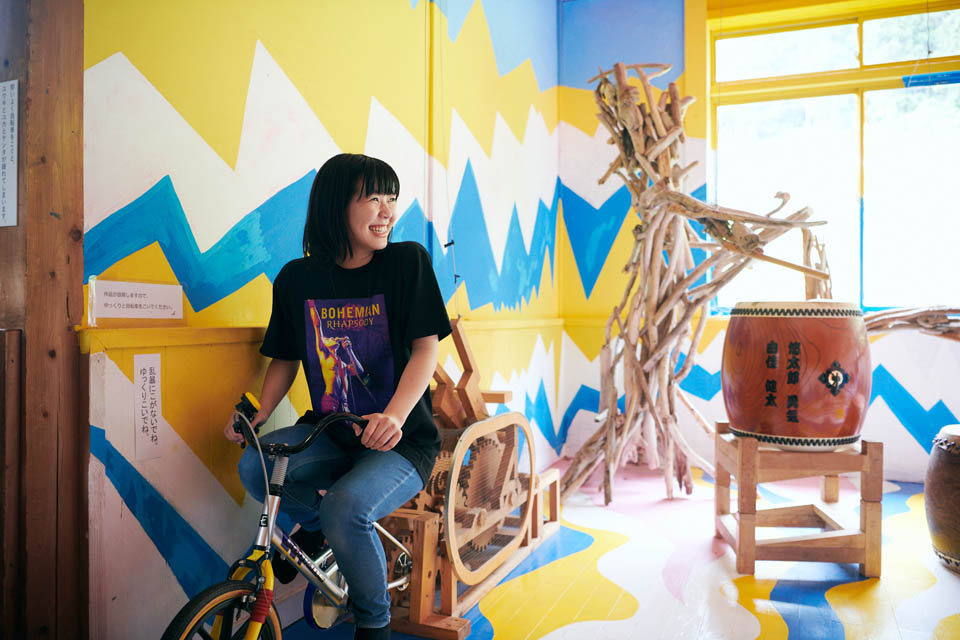
The students made of driftwood are moved by wires connected to the bicycle as you pedal and hit the drum.
As you pedal the bicycle in front of “the Drum Room”, it moved the three students and hit the Japanese drum. This is a reference to the story where students knocked over the ghosts with positive sounds and beats. Let’s play “Homerareteru” by Mayumura as BDG.
By the way, was everyone’s precious dream and hope undamaged?
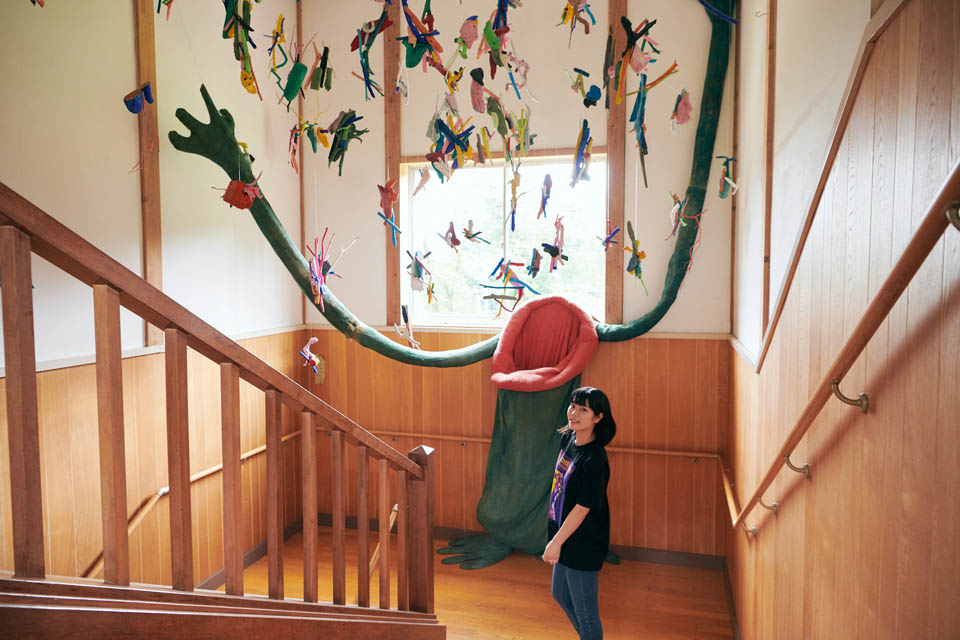
Toperatoto at the stair landing. Dreams in the stomach jumped out from the mouth.
It was Toperatoto sitting on the stair landing. The cornered Doradoraban crushed Toperatoto and thus all the memories in its stomach jumped out of the mouth.
“Wow, it looks scary but somewhat cute at the same time. Memories of all the people were scattered in the school. What happens then, I wonder.”
We saw a dynamic installation at the last classroom, the three students went through the wall and flew into the sky, telling us “while it is closed, the place is filled with important memories so you don’t have to worry”. The title of the picture book, “gakko ha karappo ni naranai (The school never becomes empty” resonates this message.
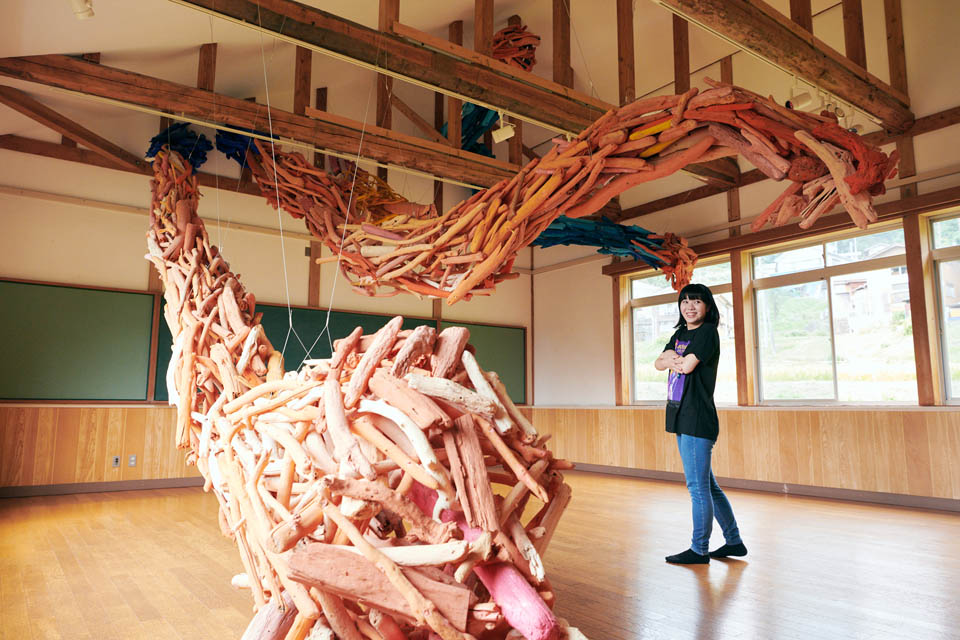
Kids departing to new adventure with feeling reassured that we are alright.

You can see kids leaving the school from outside. (Photo by Takenori Miyamoto and Hiromi Seno)
“Wow – I am thrilled. What a wonderful ending of the story. I saw the school chronology in the corridor. I learnt that the school was built in the Meiji period and started the “school lunch” at some point. While the war broke, I could easily imagine lots of memories of children were created in this place until it closed in 2005. Moreover, the last three students are close to my age. I have been wanting to perform in an entire school one day so it was so inspirational.
The museum is filled with memories of children and those who supported them. It has been capturing new memories and dreams of visitors now.
By the way, when we thought of what happened to “that” ghosts doradoraban, we found it shrunk in the basement. The crushed Toperatoto will recover as people visit here. It is all settled.
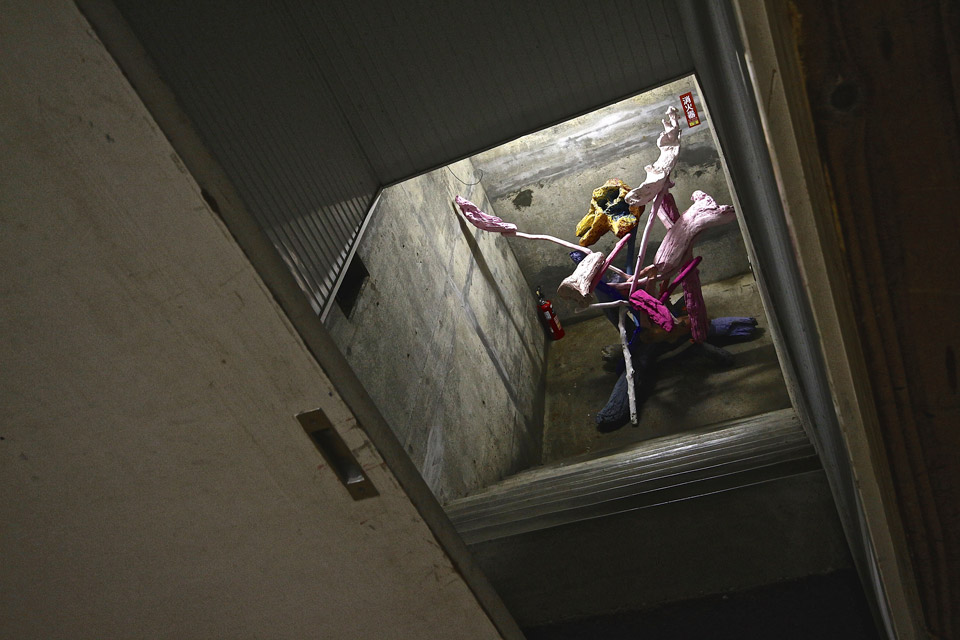
We found the cheeky ghost Doradoraban shrunk at the basement. (Photo by Shigeru Akimoto)
Eat, feel and learn about culture. Matsudai Nohbutai
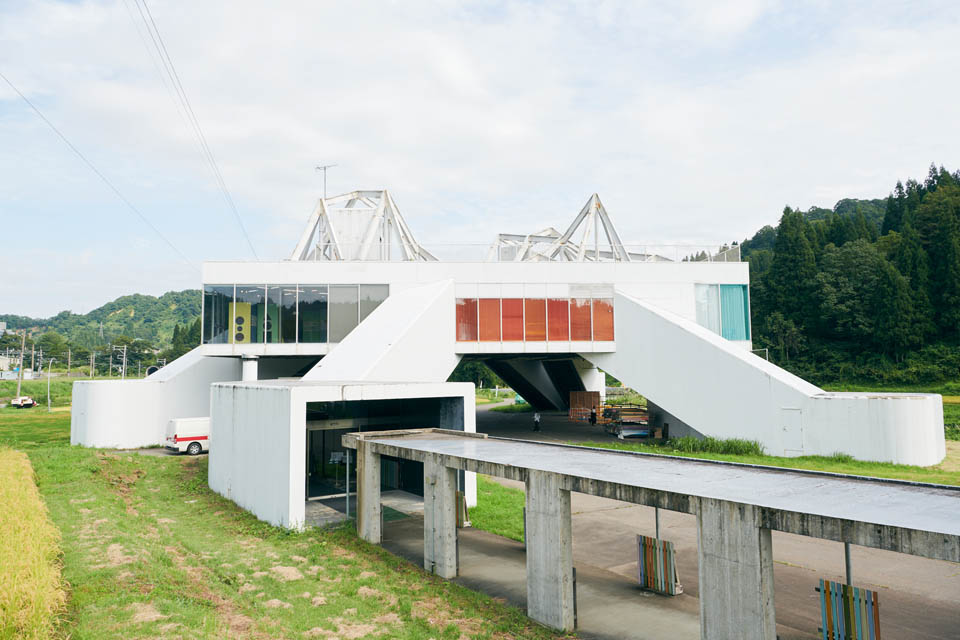
We then headed to Matsudai Nohbutai. It is a cultural facility consisting of a restaurant and an exhibition space standing adjacent to the Matsudai station on HokuHoku line. Visitors can experience farming culture in the snow country in Matsudai area under the theme of exchange between city and farming village. Artworks outdoor dotted around the facility are also worth exploring.
“Echigo-Matsudai Satoyama Shokudo” is the place you would like to stop by. You can enjoy nutritious dishes inspired by local cooking which use delicious rice and seasonal offerings.
Matsudai Nohbutai (2003)
Under the them of “exchange between city and farming village”, it is a facility to experience farming culture in Matsudai area, the snow country. Designed by Dutch architect, MVRDV, different artists also contributed to different spaces in the building. Matsudai Satoyama Shokudo offers traditional cuisine with contemporary twists.
*Visit the official website for details such as opening period, hours and access to plan your visit.
At Echigo-Matsudai Satoyama Shokudo. Satoyama Gohan, daily lunch served on weekdays.
Satoyama Landscape spreads in front of the restaurant. (Photo by Ayumi Yanagi)
The mirror surface of table reflects the ceiling with seasonal scenes of the region.
You can see the terraced rice field and Satoyama landscape from the large glass window of the restaurant in blue. The ceiling is filled with photos of local and seasonal scenes viewed from local people’s houses which reflected onto the table with mirror surface. This is an artwork called “Café Reflect” by Jean-Luc Vilmouth (2003).
“It is so delicious. And what a fun place. I have organised “bus-jack live” (renting a bus for live guests only) and “drag-net live” (audience pull the drag-net as Mayumura’s singing) just because I was hoping to create something “extraordinary” in the ordinary life. While our approaches are different, I felt that artworks in Echigo-Tsumari have something similar.
As she pointed out, artworks created for “ETAT” are artistic expressions taking inspirations from life and history of the places. There are so many of such artworks around Matsudai Nohbutai.
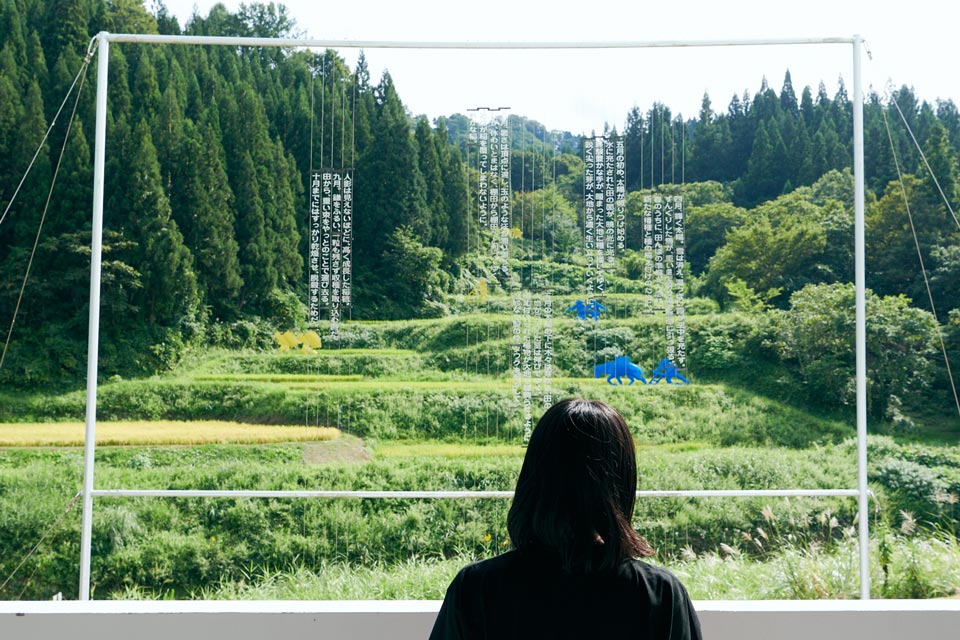
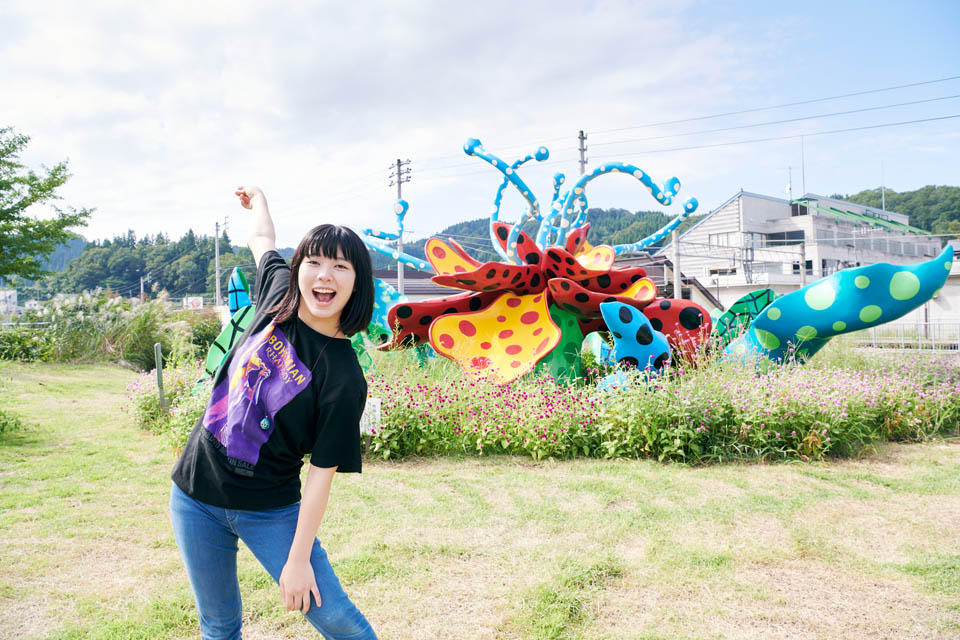
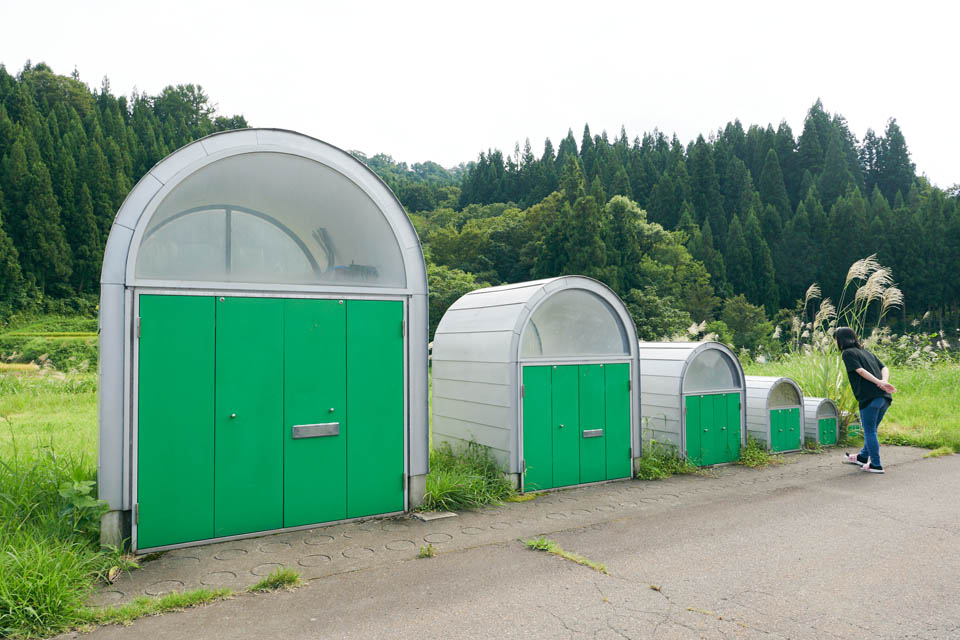
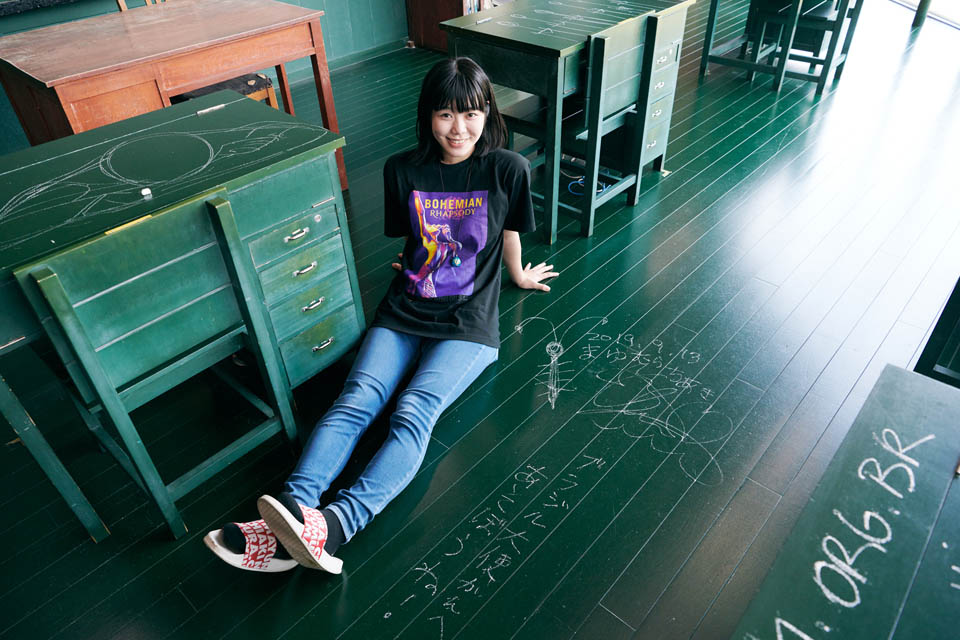
There are lots of different artworks. I visit places like sake breweries once a year with my family to learn about something – so we call field trip. It is such a fun to go on “field trip” visiting art. I was imagining it would be wonderful to visit here with my family.
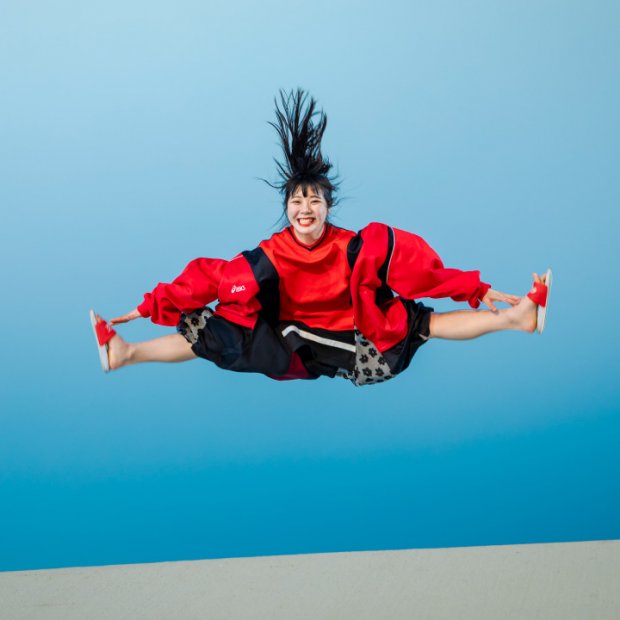
Profile
Chiaki Mayumura
Born in 12 September in 1996 in Tokyo. Singer song writer idol and CEO of kaisha-ja-naimon. She has gained reputation for her singing along with a guitar, humorous sampling, skillful track-making and cheerful and free personality. She has made a major debut with her first music album “Mejameja Monja” in May 2019 followed by the 2nd album “Gekidan Ogyarhythm” on 8 January 2020. She will go on a tour “Chiaki Mayumura 2nd Tour Gekidan Ogyarhythm.






